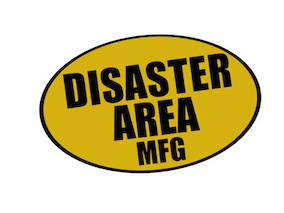About Our Printing Service
UV-LED direct-to-substrate printing is one of the fastest-growing segments in the printing industry, offering the advantage of expanding your production capabilities while providing high quality prints.
Our Mumaki MK II UV Printers can turn out several pedals at a time and bring your vision into a crisp clear reality. Our experienced techs can help guide you get the best results out of your designs.
What is UV Printing?
UV printing is a unique method of digital printing utilizing ultraviolet (UV) light to dry or cure ink, adhesives or coatings almost as soon as it hits paper, aluminum, foam board or acrylic - in fact, as long as it fits in the printer, the technique can be used to print on almost anything.
Pricing
Printing on one Side, - $4.00
Each additional Face/Side - $2.00
Additional fee for primer - $1.00
on bare enclosures
Before You Submit Your Art
Make sure...
Step One: your file is the correct size.
Step Two: your image is vecterized.
Step Three: your layers are labeled with a clear background
Step Four: your colors are set to CMYK
How To Get Your Design Ready For Printing
Our printers will print anything that is inputted into the computer. Therefore, if we give it a low resolution image, it will print a low resolution image. In order to achieve the best quality print, the first thing that needs to be done is make sure the image is sized, vectorized, layered and colored correctly.
Vectorization is the process of converting a raster image, made up of colored square pixels, into a vector line, made up of points, lines, and curves that are based upon mathematical equations. Using a vector format allows you to create striking images that are scalable with zero loss in quality. Files can be applied to large projects, including billboards and banners or small projects like apparel embroidery and business cards. By using a computer program to "trace" the image and automatically create vector lines, our printers will be able to translate your image exactly as it is meant to be seen. We highly recommend using Adobe Illustrator for creating and editing your art files.
Make sure that your image template does not exceed the size of your surface. In most cases, the image file will include a border that functions as visual reference to help the designer stay within the acceptable margins. If working off any drill template from our CNC Milling page, give yourself at least 0.125" of bleed space from all edges to avoid distortions or run-offs in your designs.
Know your layers. Depending on how many colors and shapes you have, you may have one or multiple layers. Design parameters, such as gloss, need to be specified. White content should have their own labeled layers to distinguish between negative space and actual printable white images.
When it comes to graphic design, there are two color modes to be aware of, RGB and CMYK. RGB is an additive color model and is best for projects that are purely digital in nature as it uses white as a combination of all primary colors and black as the absence of light. CMYK, on the other hand, is a subtractive process and uses white as the natural color of the print background and black as a combination of physical colored ink. Make sure your colored layers are set to CMYK before submitting your art.
Expect a small margin of error when it comes to tighter design aspects that correspond with drill points and component placement. For example, printed dials and markers that correspond with the sweep of a knob or slide switch.
